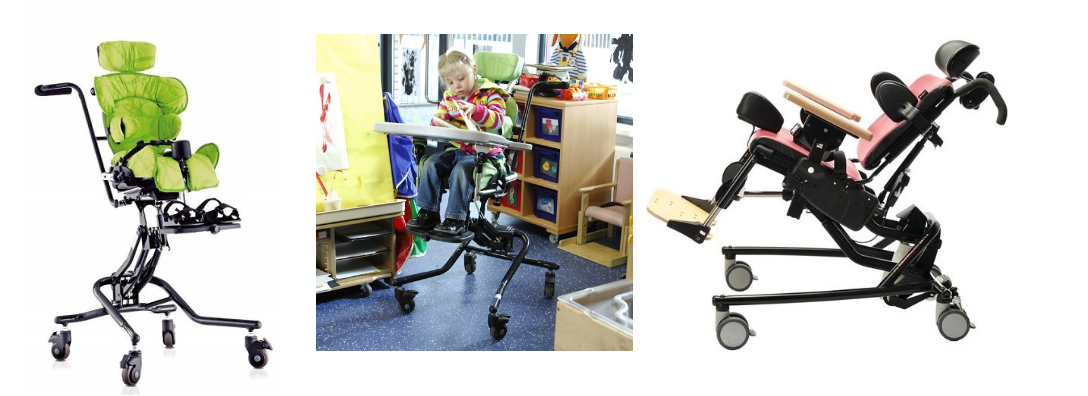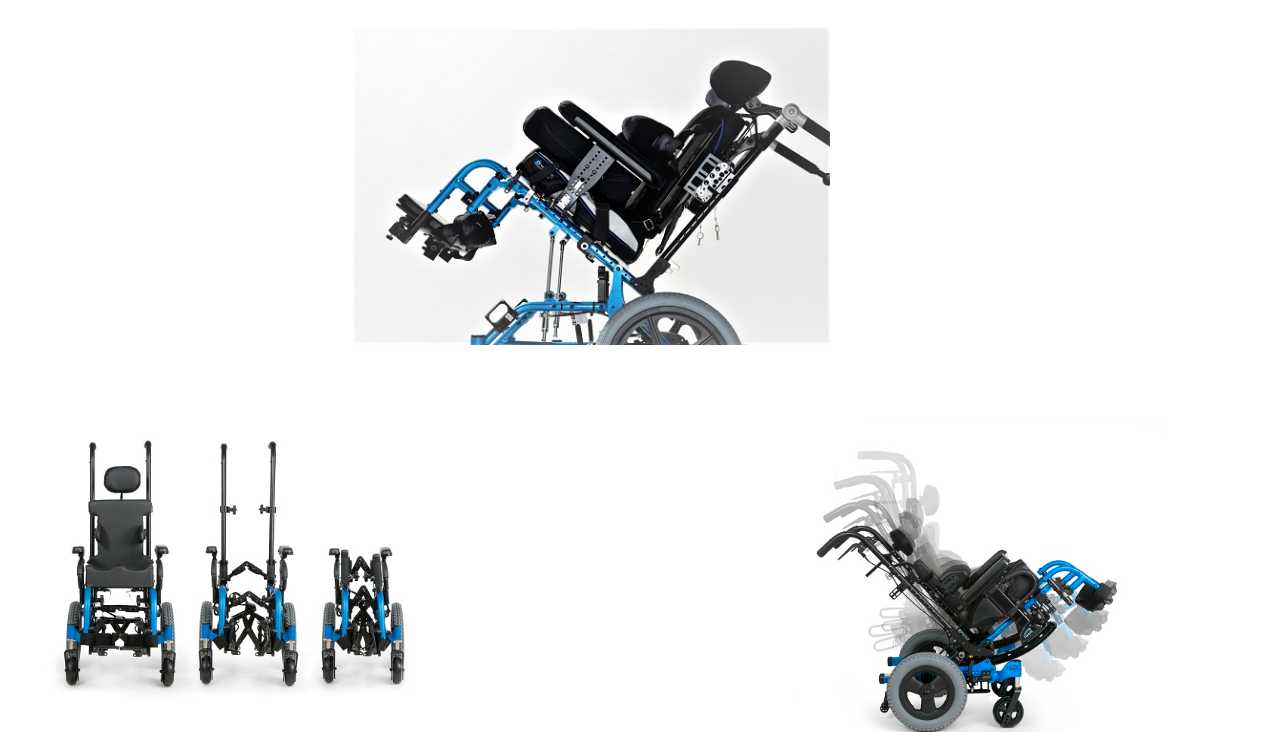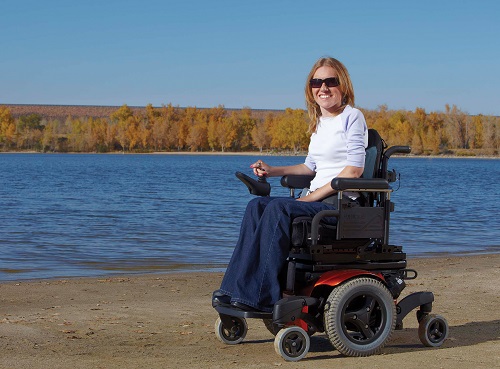A guideline for choosing mobility bases

Choosing the type of mobility base for your wheelchair or seating system is another piece of the seating system puzzle. Mobility bases provide a means to getting to where you want to be. The type you choose can help achieve function and independence.
A variety of mobility bases are available on the market so it’s best to do some research to assist in making your decision and determining the right mobility base for your needs. It’s always a good idea to work closely with an experienced OT (Occupational Therapist) who can assist you in choosing the right mobility base for you. Here are some guidelines to get you started.
HIGH-LOW BASES
High-Low chairs – sometimes also known as Hi-Lo chairs - are seating systems on a high-low base, and are a popular choice for younger clients with complex seating needs. High-Low chairs offer many essential adjustments, with systems that offer advantages to both the carer and the client. High-Low Bases are stable bases with a unique height adjustment function that usually enables adjustment from the floor to the table. Many systems will have the option of being on an indoor frame, where they may have small lockable castors, or an outdoor base with larger outdoorsy-type wheels. Most of these types of bases will also accommodate a seat tilting range – generally up to approximately 30°. Various seating systems can be mounted onto the bases by utilising the interface on the High-Low base. Frames are generally available with either gas spring or power height adjustment.
The height adjustability generally enables the seating system to rise up from the floor to a table or desk, so that clients are able to participate in family and leisure activities or interact with peers in the classroom. The height also assists carers with their transfers. High-Low systems are a suitable choice for clients with complex seating needs as they generally provide appropriate support, whilst providing the additional opportunities for them to be included with family and peers, at the same height, communicating face-to-face.

MANUAL WHEELCHAIR MOBILITY BASES
When looking at wheelchair mobility bases there are a range to choose from. It is critical that you know what your goals and outcomes are, to assist you in making an appropriate decision. Collaborating with an experienced OT will assist in this process. Some mobility base options include:
Transit Style bases – these have smaller rear wheels and are easy to fold and transport in the back of the car. They can accommodate complex seating requirements or be a more basic slung-style seating.

Self-Propelling bases – these have large rear wheels and need to be positioned at a good height and distance to ensure efficient propulsion. When considering a self-propelling base, it is necessary to consider the camber of the rear wheels. “Camber” is the rear wheel position being set on an angle from their axle position, where the distance between the top of the wheels is less than at the bottom of the wheels. The angle can range from 0º up to an extreme 12º (most often used in sports wheelchairs).1 Camber may have an impact on efficient propulsion and turning circle of the chair – the grater the camber the easier it is to turn the chair, and the more stable the base.
Tilt in Space bases – these bases provide an opportunity for a change in position for clients who cannot independently shift their body weight. Tilting the angle of the wheelchair may assist in the reduction of skin breakdown by redistributing pressure from the pelvis to the back, and may provide a safe and easy way for the caregiver to provide weight shift for their client.2

POWER MOBILITY BASES
It is essential to choose a power wheelchair drive configuration that best suits your needs. Considerations include (but are not limited to):

Front Wheel Drive – as the name suggests, has its drive wheels in front of the seat, which creates a kind of pulling effect and facilitates such acts as curb-climbing.3 The front-wheel-drive configuration is a very stable setup for uneven terrain, up and down hills. A point to remember: When turning, you have to be aware of what is behind you.4
Rear Wheel Drive – drive wheels at the rear tend to excel outdoors and offer better suspension options. These mobility bases drive through aggressive terrain, and remain stable – such as grass, gravel uneven terrain.5
Mid-Wheel Drive – probably the most popular of the power base options. Mid-wheel drive chairs offer the smallest of turning circles, making it easy to learn to drive. The small turning circle makes it a good choice for indoor use, as it enables the chair to manoeuvre in tight spaces - for example moving from the bedroom into a bathroom in the home environment.
All-Drive Terrain – considered 4 x 4 options, all-terrain wheelchairs that can go where other power chairs cannot, including treacherous and uneven terrains
Power Assist – some manual wheelchairs can be converted into power assisted wheelchairs. These power units affix to the wheels, or the base of the chair. Power assist can increase your propulsion efficiency, whilst keeping all the functionalities of your manual wheelchair. There are a variety of these on the market. Advice and assistance from your OT will assist you in determining of Power Assist is appropriate for you.

As you can see, there are many factors that need to be considered when choosing a mobility base for your seating system. It is just one factor in the overall picture. Your experienced OT can help you navigate this range.

The full range of wheelchairs, and wheelchair seating systems can be found on our website. For more information on any products, contact us via our message centre.
References:
1Manual Wheelchair – Information Resource for Wheelchair Providers - www.health.qld.gov.au.
2www.sunrisemedical.com/getattachment/9a70a01c-2e91-4c91-a4c3-ed6342f2aeb0/Clinical-Benefits-of-Tilt-in-Space.aspx.
3Mobility Management – Choosing the right power chair configuration – Laurie Watanabe, Sept 2008.
4Mobility Management – Choosing the right power chair configuration – Laurie Watanabe, Sept 2008.
5Mobility Management – Choosing the right power chair configuration – Laurie Watanabe, Sept 2008.
Images:
Squiggles Seating System; Rifton Activity Chair; Quickie 7R Series; Zippie XCape; Glide Series 2; Freedom NXT; Zippie Iris; Quickie 710-Series; Zippie ZM-310.

